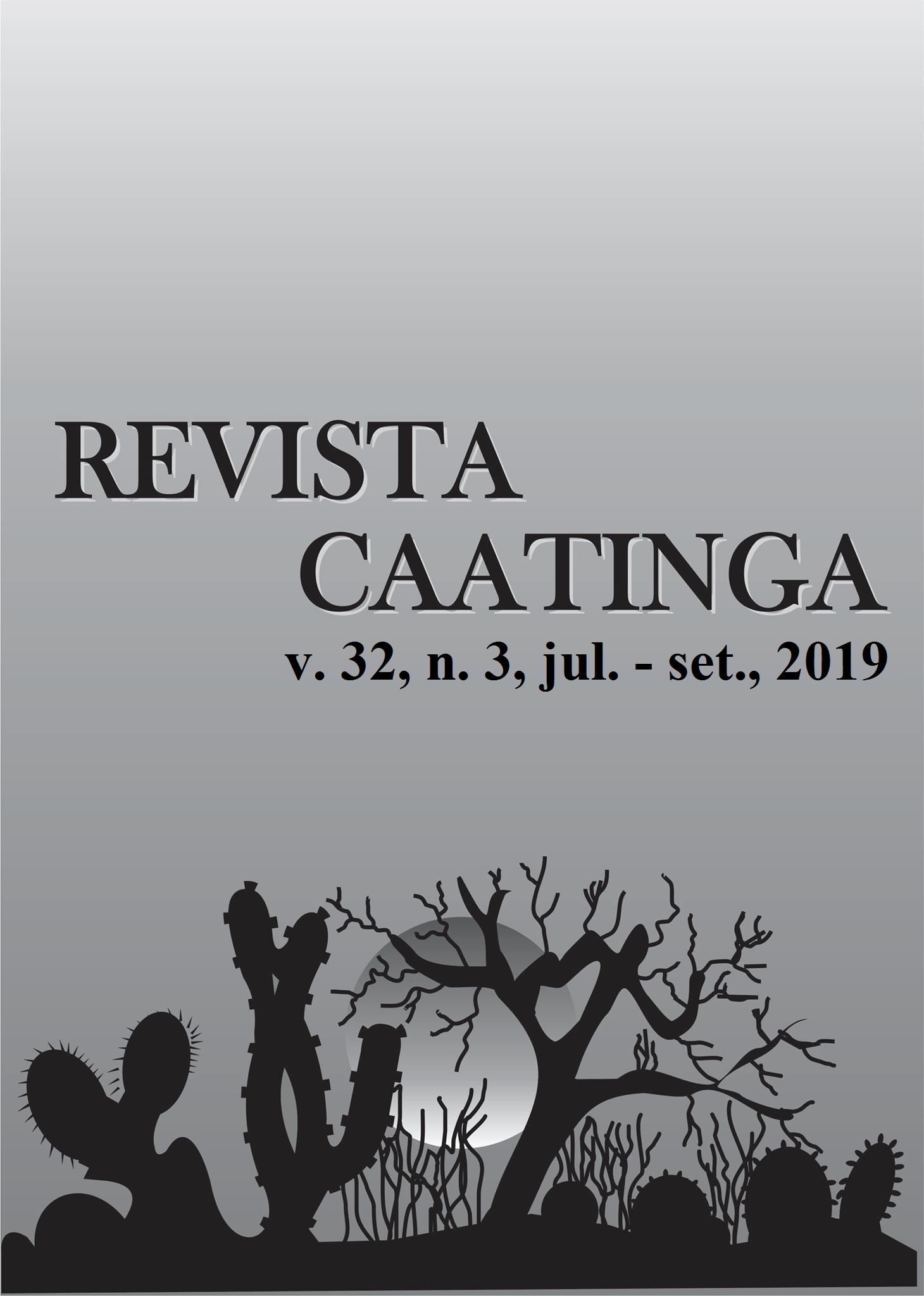TEMPORAL STABILITY OF TOTAL ORGANIC CARBON OF SOILS UNDER DIFFERENT USES IN THE CAATINGA BIOME
DOI:
https://doi.org/10.1590/1983-21252019v32n320rcKeywords:
Soil organic matter. Semiarid. Soil management. Biomass contribution.Abstract
The objective of this work was to evaluate the temporal stability of total organic carbon (TOC) of soils under different uses in areas with Caatinga vegetation. The experiment was conducted in an experimental farm that encompasses a watershed in the Curu River Valley, in Pentecoste, state of Ceara, Brazil. Soil samples were collected in two areas with Caatinga vegetation under different uses—one with a 35-year preserved area (CP35) and one with a 30-year pasture area (CR30)—and the sampling points were distributed using a 30×30 m uniform grid. Soil samples of the 0-0.2 m layer were collected between February 2016 and April 2017 to determine TOC; and nonparametric Spearman's correlation, mean relative difference (MRD), and temporal stability index (TSI) tests were applied to evaluate TOC stability. The Spearman's test showed a higher correlation between collection dates for CR30 than for CP35. The DRM showed more points with relative differences approaching zero for CP35, and more points with lower standard deviation for CR30. The TSI indicated a greater number of points to be used for CR30 because they have better temporal stability. Therefore, the TOC of the CR30 has better temporal stability than that of the CP35, presenting TSI of approximately 1.5-fold that of the CP35. The thinning of the vegetation in CR30 homogenized the soil TOC, whereas the fallow area, which were preserved, had greater heterogeneity.
Downloads
Downloads
Published
Issue
Section
License
Os Autores que publicam na Revista Caatinga concordam com os seguintes termos:
a) Os Autores mantêm os direitos autorais e concedem à revista o direito de primeira publicação, com o trabalho simultaneamente licenciado sob a Licença Creative Commons do tipo atribuição CC-BY, para todo o conteúdo do periódico, exceto onde estiver identificado, que permite o compartilhamento do trabalho com reconhecimento da autoria e publicação inicial nesta revista, sem fins comerciais.
b) Os Autores têm autorização para distribuição não-exclusiva da versão do trabalho publicada nesta revista (ex.: publicar em repositório institucional ou como capítulo de livro), com reconhecimento de autoria e publicação inicial nesta revista.
c) Os Autores têm permissão e são estimulados a publicar e distribuir seu trabalho online (ex.: em repositórios institucionais ou na sua página pessoal) a qualquer ponto antes ou durante o processo editorial, já que isso pode gerar alterações produtivas, bem como aumentar o impacto e a citação do trabalho publicado (Veja O Efeito do Acesso Livre).







